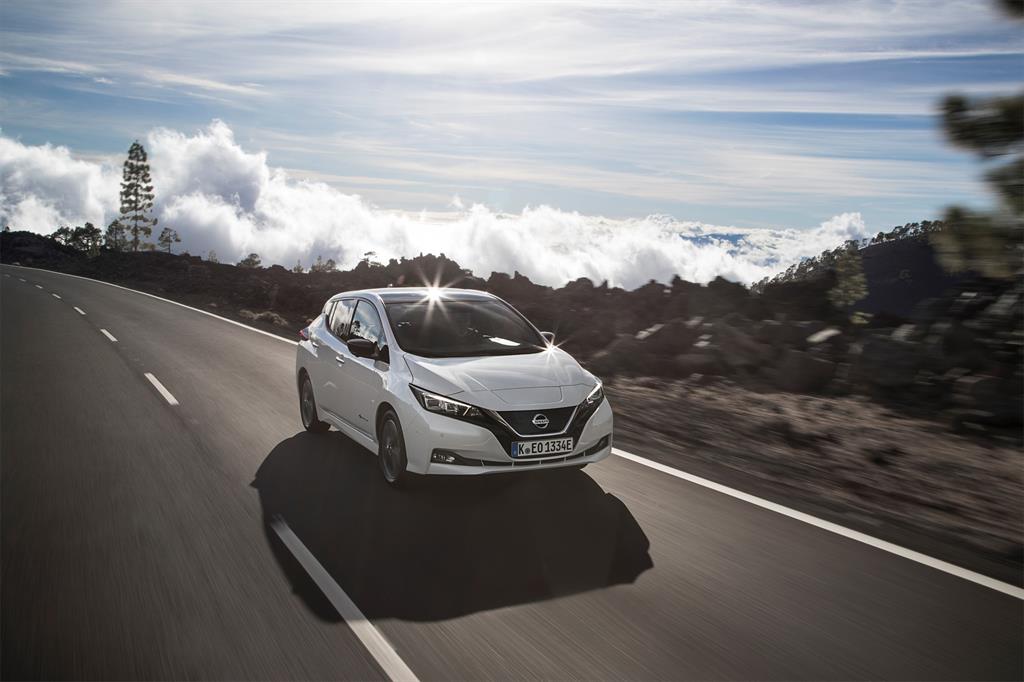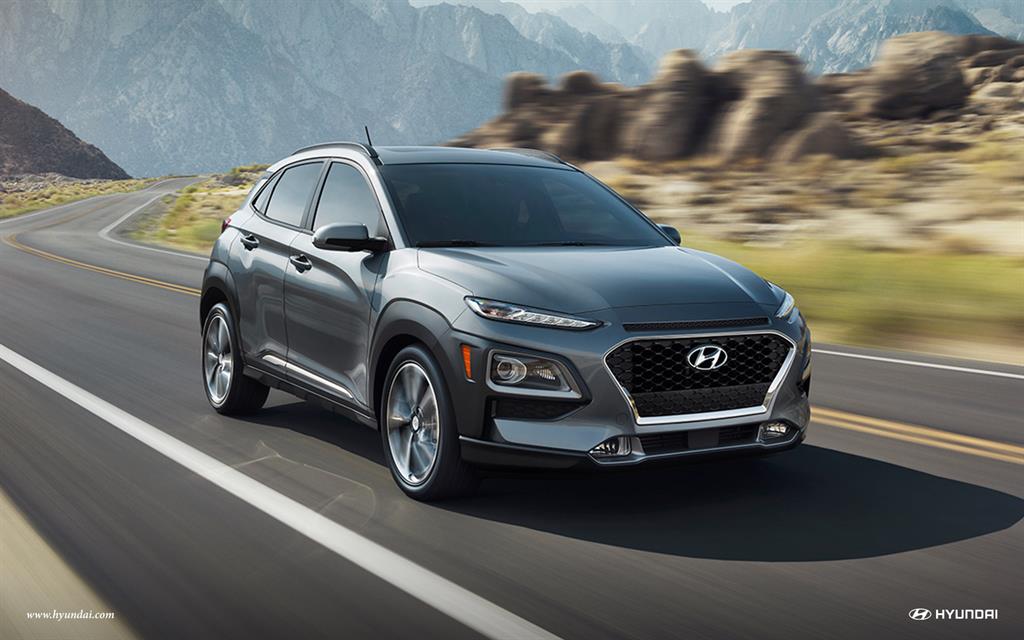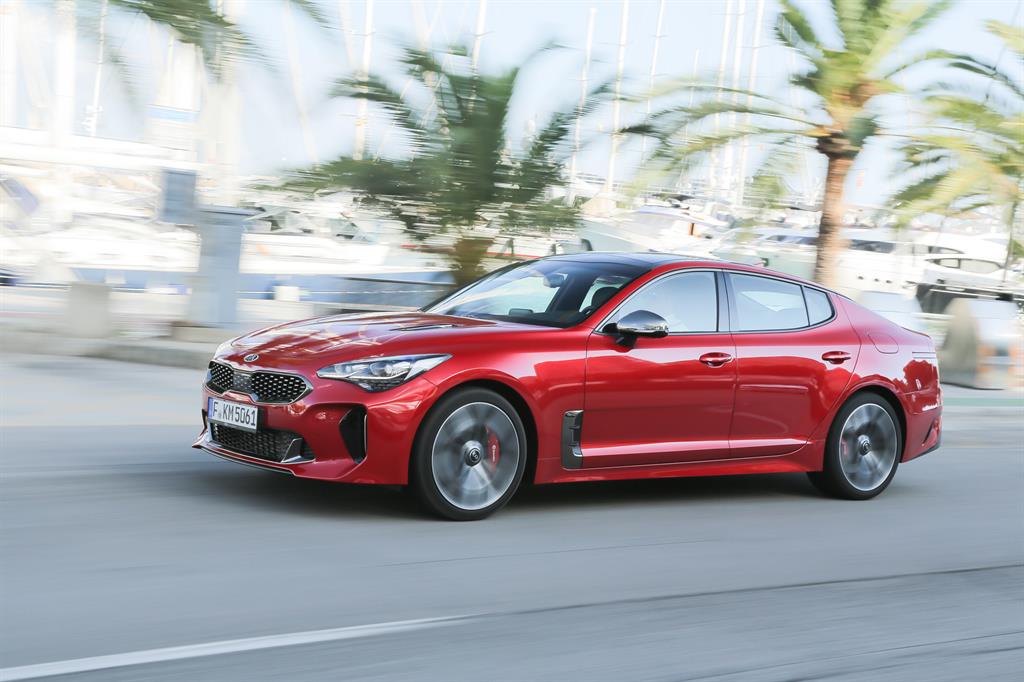World Car of the Year: Champions in the making
Twenty vehicle manufacturers from across Asia, Europe and North America are through to the final stages of the 2018 World Car Awards.
Nine of those finalists are in the running for the most talked about, sought after and important automotive award on the planet – the 2018 World Car of the Year title. It’s no great shock that familiar stalwarts and past WCOTY winners such as BMW, Mazda, Nissan and VW have been voted into the prestigious Top Ten this time around.
But fast-improving Kia and born again Alfa Romeo are welcome additions to that ten-strong list, too - as is a buoyant Volvo which can do little wrong at present.
The same goes for Land Rover which has just achieved the unthinkable by winning enough votes to ensure that two of its all-new models are in a position to compete for WCOTY glory. Nissan, with its new LEAF, will be defending the title it won with the original version back in 2011.
DISAPPOINTMENT FOR VW
Although Volkswagen should be relieved that its T-Roc has qualified, there must be disappointment at the company’s HQ in Wolfsburg that its latest version of the Polo did not. This year VW was hoping to repeat what it achieved in 2010 when it won the WCOTY trophy with its (previous generation) Polo. But a follow up victory in 2018 is not to be, following the revelation that the latest version of its big-selling supermini has not earned Top 10 status and is therefore out of the WCOTY running.
The elimination was unexpected but is possibly a sign of the times. After all, Volkswagen has been producing Polo superminis for the last 43 years. And its’ latest (sixth generation) version that will see it through to Polo’s 50th birthday is not as cute, distinctive and VW-like as its predecessors. But at least the all-new Polo stands a one in five chance of claiming the World Urban Car crown at our prize-giving ceremony in New York on the morning of March 28.
VW knows it’s up against stiff competition, though - from conventional, up to 4.2m long superminis such as the Ford Fiesta, Nissan Micra and Suzuki Swift, plus the cleverly designed Hyundai KONA SUV which looks large in the flesh, but is in fact only 4.165m long and therefore just within the new World Urban Car rules.
It’s a hugely important category this, as small cars already sell in colossal numbers in Europe and Asia and will become increasingly popular as demand intensifies for precious road space and parking bays across the globe. All over the world the trend is that more people are moving from rural to urban areas in search of employment and improved social lives.
FUTURE MOBILITY
This has to mean that small (but not necessarily tiny) cars are the future for the motoring masses.
Over the years Audi has been awarded eight World Car trophies - that’s more than any other company has won in the history of the competition. But its German and Japanese rivals in the World Luxury Car class are highly impressive this year, so the serial World Car winner from Ingolstadt may struggle to beat exciting offerings from BMW, Lexus and Porsche - the latter having a 40% chance of winning the category thanks to the inclusion of the Panamera and Cayenne.
But both Audi (with RS 3) and Lexus (LC 500) also have a chance of victory in the World Performance Car sector where the comparatively modest Honda Civic Type R has also qualified as a finalist, along with the Alfa Romeo Giulia Quadrifoglio and BMW M5.
The group of 2018 Word Green Car contenders is dominated - surprisingly, perhaps - by American manufacturers.
Another surprise is that more pure-electrics have not made it through to the Green finals this year, thereby suggesting that there’s some way to go before the world accepts them as genuine and affordable alternatives to petrol/gasoline, diesel, and LPG models.
The finalists in the WCOTY division and the five supporting categories are a deliciously diverse lot, though. In no particular order of importance, there are - as expected - conventional superminis, compact cars and mid-sized to large saloons/sedans (some sporty, some not), plus a traditional minivan/MPV in the mix. Hot hatches, crossovers, sports cars, Grand Tourers, a luxury limo or two, plus a pure-electric are other contenders.
But it’s the small/medium/large, modest/premium/ luxury crossovers or SUVs that dominate - not least because they’re present in most of our 2018 World Car categories. On this evidence, the petrol/gasoline or diesel SUV remains in rude health and is still extremely popular with World Car jurors based in cities, towns and rural areas across the globe.
At the very least, it’s fair to conclude that these SUVs are among the best, most fit for purpose and desirable cars in the world today. Equally true is that with just one pure-electric candidate (LEAF) in the World Car finals in 2018, the much talked about ‘electric car revolution’ is still limping along slowly instead of surging forward as it should be doing by now. Despite the growing objections from politicians and environmentalists to diesel and gasoline cars, they continue to account for the overwhelming majority of sales on the world stage.
At the same time, pure-electrics still sell in minuscule volumes. And unless and until EVs cost less to buy new and travel further after each recharge, demand and sales will remain desperately low. – Wheels 24
World Car of the Year Finalists
Alfa Romeo Giulia
BMW X3
Kia Stinger
Land Rover Discovery
Mazda CX-5
Nissan Leaf
Range Rover Velar
Toyota Camry
Volkswagen T-Roc
Volvo XC60
2018 World Luxury Car of the Year Finalists
Audi A8
BMW 6 Series Gran Turismo
Lexus LS
Porsche Cayenne
Porsche Panamera
2018 World Performance Car of the Year Finalists
Alfa Romeo Guilia Quadrifoglio
Audi RS3
BMW M5
Honda Civic Type R
Lexus LC 500
2018 World Urban Car of the Year Finalists
Ford Fiesta
Hyundai Kona
Nissan Micra
Suzuki Swift
Volkswagen Polo
2018 World Green Car of the Year Finalists
BMW 530e iPerformance
Chevrolet Cruze Diesel
Chrysler Pacifica Plug-In Hybrid
Nissan Leaf
Nine of those finalists are in the running for the most talked about, sought after and important automotive award on the planet – the 2018 World Car of the Year title. It’s no great shock that familiar stalwarts and past WCOTY winners such as BMW, Mazda, Nissan and VW have been voted into the prestigious Top Ten this time around.
But fast-improving Kia and born again Alfa Romeo are welcome additions to that ten-strong list, too - as is a buoyant Volvo which can do little wrong at present.
The same goes for Land Rover which has just achieved the unthinkable by winning enough votes to ensure that two of its all-new models are in a position to compete for WCOTY glory. Nissan, with its new LEAF, will be defending the title it won with the original version back in 2011.
DISAPPOINTMENT FOR VW
Although Volkswagen should be relieved that its T-Roc has qualified, there must be disappointment at the company’s HQ in Wolfsburg that its latest version of the Polo did not. This year VW was hoping to repeat what it achieved in 2010 when it won the WCOTY trophy with its (previous generation) Polo. But a follow up victory in 2018 is not to be, following the revelation that the latest version of its big-selling supermini has not earned Top 10 status and is therefore out of the WCOTY running.
The elimination was unexpected but is possibly a sign of the times. After all, Volkswagen has been producing Polo superminis for the last 43 years. And its’ latest (sixth generation) version that will see it through to Polo’s 50th birthday is not as cute, distinctive and VW-like as its predecessors. But at least the all-new Polo stands a one in five chance of claiming the World Urban Car crown at our prize-giving ceremony in New York on the morning of March 28.
VW knows it’s up against stiff competition, though - from conventional, up to 4.2m long superminis such as the Ford Fiesta, Nissan Micra and Suzuki Swift, plus the cleverly designed Hyundai KONA SUV which looks large in the flesh, but is in fact only 4.165m long and therefore just within the new World Urban Car rules.
It’s a hugely important category this, as small cars already sell in colossal numbers in Europe and Asia and will become increasingly popular as demand intensifies for precious road space and parking bays across the globe. All over the world the trend is that more people are moving from rural to urban areas in search of employment and improved social lives.
FUTURE MOBILITY
This has to mean that small (but not necessarily tiny) cars are the future for the motoring masses.
Over the years Audi has been awarded eight World Car trophies - that’s more than any other company has won in the history of the competition. But its German and Japanese rivals in the World Luxury Car class are highly impressive this year, so the serial World Car winner from Ingolstadt may struggle to beat exciting offerings from BMW, Lexus and Porsche - the latter having a 40% chance of winning the category thanks to the inclusion of the Panamera and Cayenne.
But both Audi (with RS 3) and Lexus (LC 500) also have a chance of victory in the World Performance Car sector where the comparatively modest Honda Civic Type R has also qualified as a finalist, along with the Alfa Romeo Giulia Quadrifoglio and BMW M5.
The group of 2018 Word Green Car contenders is dominated - surprisingly, perhaps - by American manufacturers.
Another surprise is that more pure-electrics have not made it through to the Green finals this year, thereby suggesting that there’s some way to go before the world accepts them as genuine and affordable alternatives to petrol/gasoline, diesel, and LPG models.
The finalists in the WCOTY division and the five supporting categories are a deliciously diverse lot, though. In no particular order of importance, there are - as expected - conventional superminis, compact cars and mid-sized to large saloons/sedans (some sporty, some not), plus a traditional minivan/MPV in the mix. Hot hatches, crossovers, sports cars, Grand Tourers, a luxury limo or two, plus a pure-electric are other contenders.
But it’s the small/medium/large, modest/premium/ luxury crossovers or SUVs that dominate - not least because they’re present in most of our 2018 World Car categories. On this evidence, the petrol/gasoline or diesel SUV remains in rude health and is still extremely popular with World Car jurors based in cities, towns and rural areas across the globe.
At the very least, it’s fair to conclude that these SUVs are among the best, most fit for purpose and desirable cars in the world today. Equally true is that with just one pure-electric candidate (LEAF) in the World Car finals in 2018, the much talked about ‘electric car revolution’ is still limping along slowly instead of surging forward as it should be doing by now. Despite the growing objections from politicians and environmentalists to diesel and gasoline cars, they continue to account for the overwhelming majority of sales on the world stage.
At the same time, pure-electrics still sell in minuscule volumes. And unless and until EVs cost less to buy new and travel further after each recharge, demand and sales will remain desperately low. – Wheels 24
World Car of the Year Finalists
Alfa Romeo Giulia
BMW X3
Kia Stinger
Land Rover Discovery
Mazda CX-5
Nissan Leaf
Range Rover Velar
Toyota Camry
Volkswagen T-Roc
Volvo XC60
2018 World Luxury Car of the Year Finalists
Audi A8
BMW 6 Series Gran Turismo
Lexus LS
Porsche Cayenne
Porsche Panamera
2018 World Performance Car of the Year Finalists
Alfa Romeo Guilia Quadrifoglio
Audi RS3
BMW M5
Honda Civic Type R
Lexus LC 500
2018 World Urban Car of the Year Finalists
Ford Fiesta
Hyundai Kona
Nissan Micra
Suzuki Swift
Volkswagen Polo
2018 World Green Car of the Year Finalists
BMW 530e iPerformance
Chevrolet Cruze Diesel
Chrysler Pacifica Plug-In Hybrid
Nissan Leaf









Kommentaar
Republikein
Geen kommentaar is op hierdie artikel gelaat nie